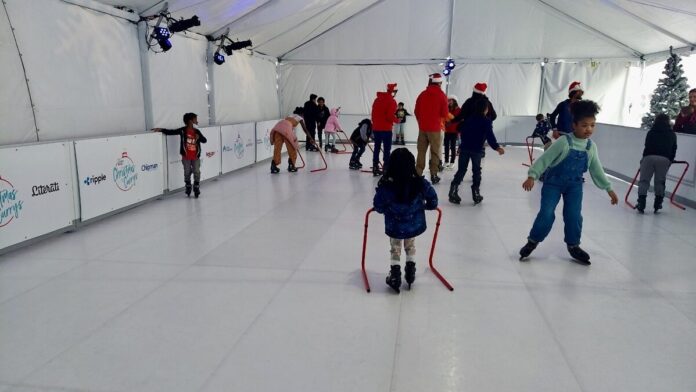Imagine owning a skating rink that doesn’t need water, power, coolants, or bulky equipment like a Zamboni. Synthetic ice makes this possible.
However, it is essential to note that synthetic ice can cause skates to wear down more quickly than natural ice. Choosing a quality product will help reduce this effect.
Size
Whether your synthetic ice rink will be indoors or outdoors, choosing the correct size is essential. A giant rink will require more materials and labor, with a higher price tag.
It’s a good idea to evaluate the costs charged by various manufacturers to prevent paying too much. It will help you compare prices and save money on your synthetic outdoor ice rink.
In addition to choosing the right size for your rink, you should also consider the surface used to create it. You will need a flat, clean surface free of debris and water. Dasher boards should accompany larger rinks to ensure a safe skating experience.
Synthetic ice sheets are made from panels connected with dovetail or tongue-and-groove connections. These connections help to keep the sheets in place and prevent them from shifting or moving during use. They are also easy to install and can be easily replaced if worn out.
While these connections may be stronger than the real thing, they provide a safe and effective skating experience. The only downside is that some skating moves, including jumping and backward skating, can be challenging on a synthetic rink. However, this is a minor concern for recreational and less advanced figure skaters.
Material
Synthetic rinks are the perfect solution for those who want to practice on ice but need access to a natural skating surface. These rinks are made from interlocking panels and are easily installed in a backyard or indoors. To make the rink as smooth as possible, it’s recommended to use a glide enhancer, which helps reduce friction and creates a more authentic skating experience.
The installation process varies depending on the rink’s location, but it typically involves leveling the area and preparing the substrate before installing the synthetic ice. Most manufacturers provide step-by-step instructions and recommend securing the panels with adhesive or screws. In addition, some rinks require boards around the perimeter and other accessories to make the space safe.
Once the rink is installed, it’s important to preheat it before using it. It will ensure that the ice is soft and ready for play. Additionally, cleaning the rink before and after each use is recommended.
Synthetic ice does not damage skates, but sharpening them is crucial to prevent regular dulling. The ice also holds up well to rain and snow. Just sweep away any debris and puddles, and remove snow with a shovel or rubber mop when necessary.
Installation
The installation process for a synthetic ice rink will vary by size and location, but it generally involves laying down interlocking panels and securing them in place. Before beginning the installation process, ensure the area is debris-free and has a flat surface. For larger rinks, it may be necessary to prepare the ground by leveling it and creating a sturdy foundation. Once the area is ready, follow the manufacturer’s instructions for the correct installation.
When constructing your synthetic ice rink, always start in the center and work outward. It ensures that each panel is properly aligned and securely interlocked with the previous one. You may also need to cut a few panels to fit around obstacles or corners. Once the panels are in place, you should apply a layer of glide enhancer to reduce friction between skates and help the skaters move faster and more fluidly.
Gliding enhancers are typically sprays that can be easily applied to the surface of a synthetic ice rink. The sprays penetrate the surface and leave behind tiny hairline scratches that act as a skating aid. They can be purchased from most skating suppliers or sporting goods stores. They’re often less expensive than traditional ice skates, making them an affordable option for anyone interested in skating.
Maintenance
The installation process can vary depending on your chosen product, but the general method involves placing your synthetic ice panels down and securing them. Start by preparing the area for your rink, including clearing it of debris and leveling the ground if necessary. After that, lay down the interlocking panels and secure them. It’s worth noting that manufacturers offer different connection systems for their sheets, so it’s essential to understand how each one works before purchasing. For example, a dovetail connection connects two panels along their edges, while a tongue-and-groove system makes it easier to disconnect the panels.
Read Also: A Seaside Affair: The Ultimate Guide to Beach Weddings in Sydney
Once your rink is set up, you’ll be ready to skate! It may take a little time to get used to skating on artificial ice, but once you do, it feels like skating on natural ice.
Synthetic ice is the perfect solution for practicing ice hockey and figure skating year-round. It requires minimal maintenance, is affordable, and is non-toxic. It’s also a great alternative to traditional ice rinks, which require expensive equipment, such as ice resurfacing machines (Zambonis) and large refrigeration units that can be expensive to run and maintain. Plus, you’ll never have to worry about ice thickness, wasting water, or praying for cold weather.



